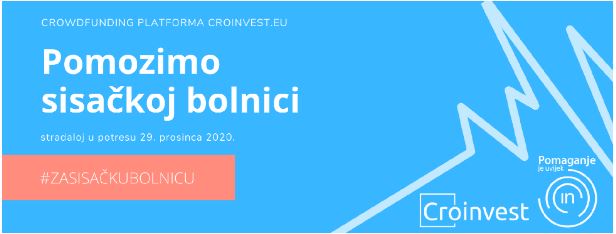Standardised Solutions for Faster Post-Quake Reconstruction, Says Minister
ZAGREB, 5 January 2021 - If standardised solutions are adopted in the reconstruction of earthquake-hit areas, more comprehensive reconstruction could begin in six to nine months, Construction Minister Darko Horvat said on Tuesday.
He was speaking to the press after a meeting at the Zagreb Faculty of Civil Engineering which was attended by architects, builders, seismologists and construction material manufacturers. They discussed the temporary accommodation of people who lost their homes in last week's tremor and the reconstruction of damaged buildings.
Horvat said that if standardised solutions were chosen, projects would be ready very soon and that the Zagreb faculties of civil engineering and architecture were willing to gift them to the ministry as intellectual property.
The projects, together with cost estimates, will serve to launch public procurement, he said, adding that he was confident construction could start in six to nine months.
Almost 20,000 buildings have been reported for inspection, including 7,000 that have been inspected, of which 3,049 have been assessed as totally or temporarily unusable, Horvat said.
Classically built and prefab homes
He said one model presented at the meeting envisaged classic construction and that another envisaged prefabricated homes. Both are permanent solution models.
The almost unanimous conclusion is that it is necessary to combine every technology and everything developers can make available, he said, adding that 3,000 houses could be reconstructed in two years.
Dragutin Kamenski of the Kamgrad company said that with smart preparation, Croatian builders and manufacturers could provide solutions for the reconstruction.
As for labour, given that quotas for foreign workers have been cancelled, Kamenski said he was sure enough workers could be found for the reconstruction but that most would certainly be foreigners.
Zagreb Faculty of Civil Engineering dean Stjepan Lakusic said it was necessary to make a quality estimate of the damage on the model of the earthquake in Zagreb last March, when the estimate was done by the Faculty and the relevant chamber.
The estimate should serve as the basis for drawing up documents to apply for money from the European Solidarity Fund, he added.
Croatian Geological Survey: Earthquakes Caused By Activation of Two Vertical Fault Systems
January 5, 2021 – The Croatian Geological Survey issued a statement on the recent earthquakes in Petrinja, Sisak, Glina, and the surrounding areas. To their knowledge, the activation of two mutually vertical fault systems caused the earthquakes.
Here is the entire press release of the Croatian Geological Survey (HGI).
The active tectonics of the entire area of Croatia, including the wider epicentral area of Pokupsko-Petrinja-Sisak, is caused by the continuous movement of the Adriatic lithospheric microplate (Adria) to the north. Therefore, in the upper parts of the Earth's crust, great strains occur at the contact of the Dinarides and the Pannonian Basin. When the strain reaches a critical level, individual faults from that system are (re)activated. There is a sudden movement of kilometers blocks of crust with dimensions of several hundred to thousands of cubic kilometers. As a result, a massive amount of energy is released, and earthquakes occur.
According to preliminary geological analyzes of Croatian Geological Survey's scientists and experts, based on geological maps, numerous field data published in the media, field prospecting, available seismological, and preliminary satellite data, the earthquake that hit Petrinja and its surroundings on December 28, 2020, activated the fault system in the underground of the broader area of Sisak, Petrinja, and Glina. (photo below)
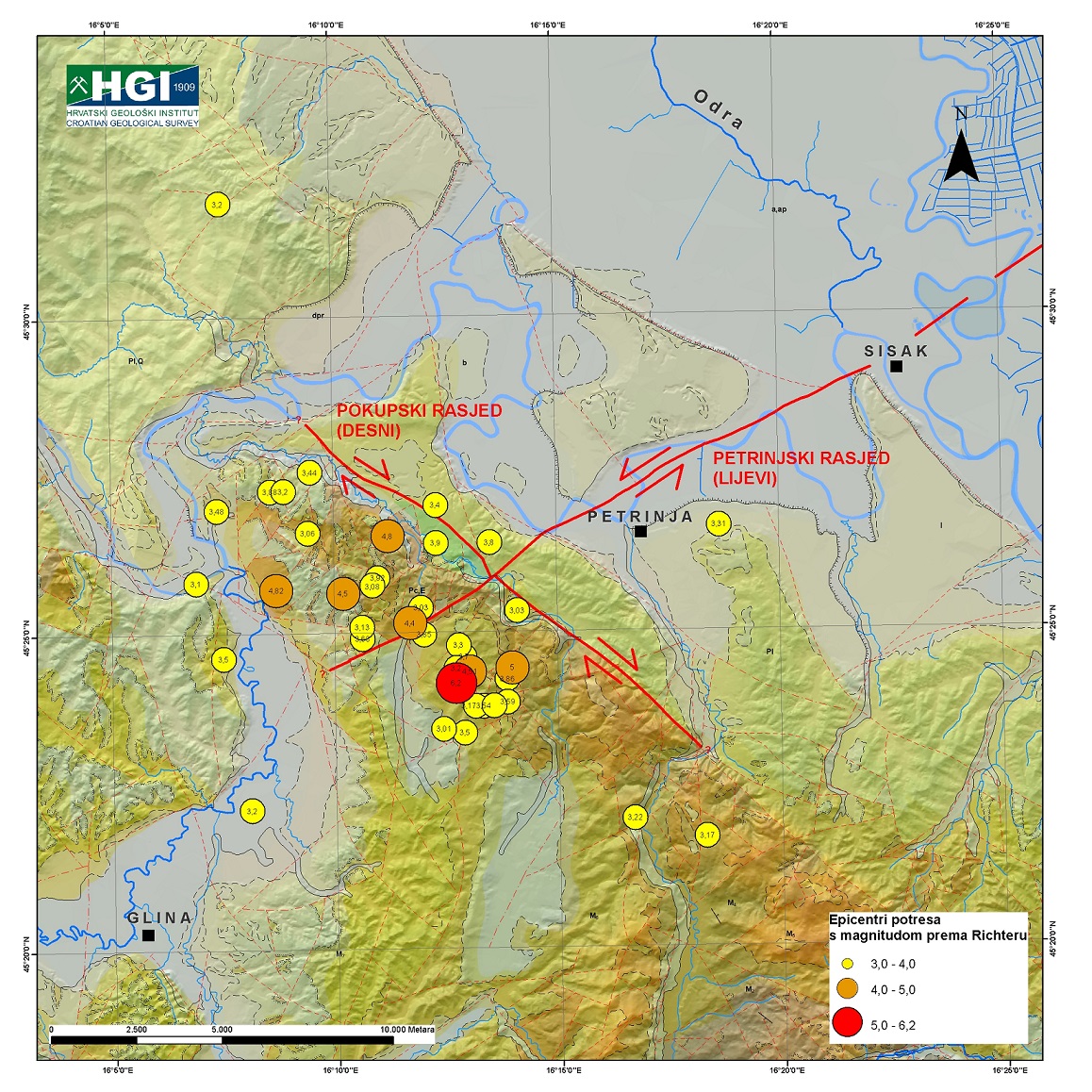
Geological map of the Petrinja and Sisak area with highlighted main faults from activated fault systems that caused earthquakes on 28 and 29 December 2020. / Croatian Geological Survey
It is evident that it is the intersection of longitudinal and transverse faults on the extension of the Dinarides. Both fault systems consist of multiple faults with horizontal wing movement (strike-slip). One is the lesser-known fault, which on this occasion is marked as the left Petrinja fault, and the other is the better-known right Pokupsko fault. Such a fault system is a textbook example of deformations that occur in rock due to compression stress along the north-south axis.
Both fault systems are shown on the Basic Geological Map of the Republic of Croatia 1: 100,000, page Sisak, prepared by the Institute of Geology HGI (Pikija, 1987), and on the overview geological map of the Republic of Croatia 1: 300,000 (HGI, 2009). All geological maps covering the territory of the Republic of Croatia are available on request on the Croatian Geological Survey's website.
Due to a large amount of released energy during the movement of fault wings, ruptures in the rocks were manifested on the surface of the terrain, so in the wider epicentral area along fault lines, we find various surface manifestations of this movement and vibration of the terrain: open cracks and paraclasses, fluid spills, sand volcanoes due to liquefaction in the Kupa and Sava river basins, deformations of the surface of the terrain and infrastructural line facilities, and numerous other, hitherto unusual phenomena for our area, which can also cause various subsequent geohazard events. Part of the deformation of the terrain between Petrinja and Glina is probably due to the collapse of the underground corridors of the brown coal mines that operated in the first half of the 20th century and were not adequately rehabilitated (buried).
More data and details on the activated fault system will be available upon completing field research by the Croatian Geological Survey's teams.
Dr. sc. Tvrtko Korbar, scientific advisor of the Croatian Geological Survey
For more on the Petrinja earthquake and to see how you can donate money, food, humanitarian, sanitary and material aid, follow our dedicated section.
HCK Says 287 Tonnes of Food Distributed, HRK 38.5 mn Raised Over Past Week
ZAGREB, 5 January 2021 - Red Cross Croatia (HCK) said on Tuesday that it had distributed 287 tonnes of food, over 200,000 litres of water and more than 60,000 hot meals in the areas hit by a 6.2 magnitude earthquake on December 29 and that it had raised HRK 38.5 million in financial donations over the past week.
More than 1,000 packages of children's food and equipment, 52 packages of animal food, 623 heaters, 76 generator units have been distributed as well.
"Currently the demand is highest for generator units, heaters, extension cords, canvases, plastic sheeting and burners," HCK said.
The organisation stressed that information spreading on social networks was not true and that it caused direct harm to the quake-hit population and caused a fall in the number of donations that would be very transparently distributed to the earthquake victims.
"The right to humanitarian aid is not conditional on the presentation of any identification documents, Red Cross teams are regularly visiting remote hamlets as well, and assistance is given to everyone in need," HCK said.
Psychosocial support has been provided to the earthquake victims and so far more than 2,900 such services have been provided, the organisation said.
Canadian Government Donating $500,000 CAD to Earthquake Efforts in Croatia
January 5, 2021 - Great news from the Canadian Government, which announced it would be donating CAD 500,000 to earthquake efforts in Croatia.
The Canadian Minister of Foreign Affairs, François-Philippe Champagne, announced on Tuesday they would be donating to support emergency response and recovery efforts in Croatia after the 6.4 magnitude earthquake devastated the Petrinja and Sisak area on December 29, 2020.
Namely, the Government of Canada will donate CAD 500,000 to the Canadian Red Cross to support the Croatian Red Cross and help those affected by the earthquake by distributing essential goods such as food and water to those affected.
“We are deeply saddened by the loss of life and terrible destruction brought by the powerful earthquake. Canada offers its sincerest condolences to the people of Croatia and stands ready to support them during this difficult time," François-Philippe Champagne, Minister of Foreign Affairs, said about the donation.
TCN learned that Member of Parliament, Bob Bratina, Chair of the Canada Croatia Parliamentary Friendship Group, was instrumental in lobbying for this aid.
The Government also announced that they would continue to work closely with the Canadian Red Cross and the Croatian Government to monitor the situation and ensure a coordinated response.
You can read more on the Government of Canada website HERE.
For more on the Petrinja earthquake and to see how you can donate money, food, humanitarian, sanitary, and material aid, follow our dedicated section.
Task Force Head Says Around 1,000 Container Homes Needed
ZAGREB, 5 January 2021 - Deputy PM Tomo Medved, who heads the task force dealing with the aftermath of the December 29 earthquake, has said that 1,000 container homes were needed to provide accommodation for people whose homes were made unlivable by the earthquake and that domestic producers were involved in the process.
Touring the earthquake-hit communities of Sisak-Moslavina County, Medved said that some people whose houses were damaged had good reason to refuse to leave their homes.
"We will find a way to protect them and provide them with accommodation. According to preliminary estimates, around 1,000 containers are necessary in Sisak-Moslavina as well as parts of Zagreb and Karlovac counties," he said.
He said some of the containers would be put next to the houses that were damaged or destroyed while some would be formed into settlements in the immediate vicinity of people's homes where that was possible.
Medved noted that some 20 containers previously allocated to hospitals for the fight against coronavirus were being relocated to the quake-hit area.
A reporter remarked that media were being contacted by people who lacked information on whether they should start renovating their homes or protect them and who were being referred to a phone number where nobody was answering their calls.
Medved said that the necessary phone numbers would be available today and called on media to share with the task force any information on earthquake victims in need of help so it could respond.
Great efforts made to reach all people hit by earthquake
Asked if all people hit by the earthquake had been reached, he said that he could not say that with 100% certainty but that great efforts had been made and that rescue teams were continuing to visit the whole area, and he once again called for sharing information on families that still had not been reached.
Petrinja Earthquake Relief: Jadrolinija Transported 150 Vehicles, Over 260 People for Free
January 5, 2021 - Jadrolinija joined the Petrinja earthquake relief last week, offering free travel for people from earthquake-affected areas, humanitarian aid vehicles, voluntary fire brigades, and HGSS.
Jadrolinija has introduced free transport for humanitarian aid vehicles, voluntary fire brigades, HGSS, and people from earthquake-affected areas. The Port of Rijeka has donated its space for a collection center for donations from Primorje-Gorski Kotar and Istria counties.
About 150 vehicles and more than 260 people have been transported by Jadrolinija ferries and catamarans free of charge so far, reports HRT.
Travel for humanitarians will continue to be free. David Sopta, President of the Management Board of Jadrolinija, says that he will list all the people who come and that everything will be fine.
Jadrolinija employees and management will pay around HRK 500,000 into the state budget.
The Port of Rijeka gave the Red Cross its 2,000-square-meter space to form a collection center for humanitarian aid donations from Primorje-Gorski Kotar and Istria counties.
The director of the City Society of the Central Committee of Rijeka, Petra Šuljić, says that she is very grateful to them for that.
Volunteers and Red Cross staff regularly go to the affected areas. Mrs. Vesna returned from Petrinja. Full of impressions and emotions, she spoke about the people who have been left without their homes. Everyone works, everyone is on the move, but they are modest, says Vesna Vidović, director of the Red Cross of Primorje-Gorski Kotar County.
Help continues to arrive regularly, thanks to good people with big hearts, concludes HRT.
Recall, last week, Jadrolinija announced vehicles transporting humanitarian aid for the earthquake-stricken area, vehicles of services and volunteers who help, and people from the affected areas who travel to the islands are exempted from purchasing travel tickets.
"Jadrolinija has decided to exempt the payment of travel tickets for vehicles participating in the transport of humanitarian aid, for vehicles of the Voluntary Fire Brigades (DVD), the Croatian Mountain Rescue Service (HGSS) and volunteers who go to help the earthquake-stricken area," the statement said.
All persons from the affected areas, who travel to the islands, receive free transport upon presenting an identity card. Jadrolinija reports that due to free transport records, it is necessary to submit the name of the organization, institution, association or name and surname, registration number, vehicle type, date of travel, and port of embarkation to the address This email address is being protected from spambots. You need JavaScript enabled to view it..
For more on the Petrinja earthquake and to see how you can donate money, food, humanitarian, sanitary, and material aid, follow our dedicated section.
Minister Announces Reconstruction of Roads, Railway Station in Sisak
ZAGREB, 5 January 2021 - Sea, Transport and Infrastructure Minister Oleg Butkovic on Tuesday visited the Sisak Railway Station and the Brest bridge over the Kupa River at Petrinja, announcing the reconstruction of the two facilities most heavily damaged in a 6.2 magnitude earthquake that hit the area on December 29.
"The total damage to state roads has been estimated at around HRK 70 million, and repair work will start urgently... Damage to county roads has been estimated at some HRK 20 million and those funds will be secured through the Croatian Roads company. As for local and unclassified roads, we will ask the towns and municipalities in whose remit they are to send us damage estimates so that we can help," Butkovic said.
As for the Sisak Railway Station, which has been damaged in the earthquake, it is a cultural monument and its restoration will be agreed with the Culture Ministry, it was said.
The railway line did not sustain any major damage and traffic is proceeding according to schedule, Butkovic said, noting that the road toll on the Zagreb-Sisak highway was not being collected to facilitate the delivery of humanitarian aid.
The minister noted that there had been a lot of problems with telecommunications infrastructure in the area but that telecommunications operators had boosted wireless Internet speeds to help normalise the situation as soon as possible.
The boosted signal should thus help make rural and border areas, where the phone signal has normally been weak, easier to reach.
Crowdfunding Campaign Launched to Help Sisak Hospital after Earthquake
At the General Hospital "Dr. Ivo Pedišić ”in Sisak, only three buildings could be used after the earthquake. The campaign "Let's help Sisak hospital" is ranising funds for emergency help for the hospital
Zagreb / Sisak, January 5, 2021 - General Hospital "Dr. Ivo Pedišić” in Sisak was destroyed in the earthquakes that hit Sisak-Moslavina County at the end of 2020.
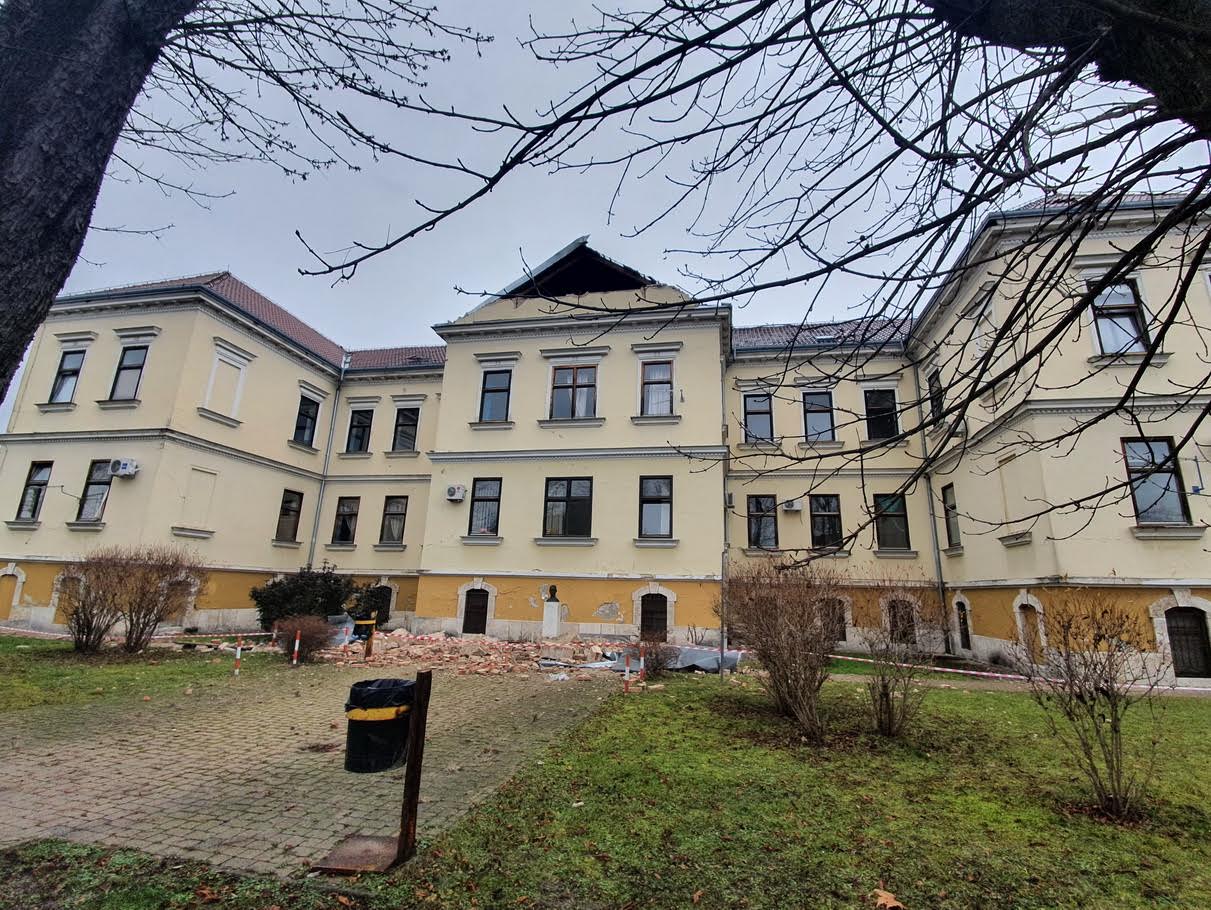
Since it is essential that the hospital has an emergency function, the association Pomaganje je uvijek IN and the crowdfunding platform Croinvest have launched a mass financing campaign "Let's help the Sisak hospital".
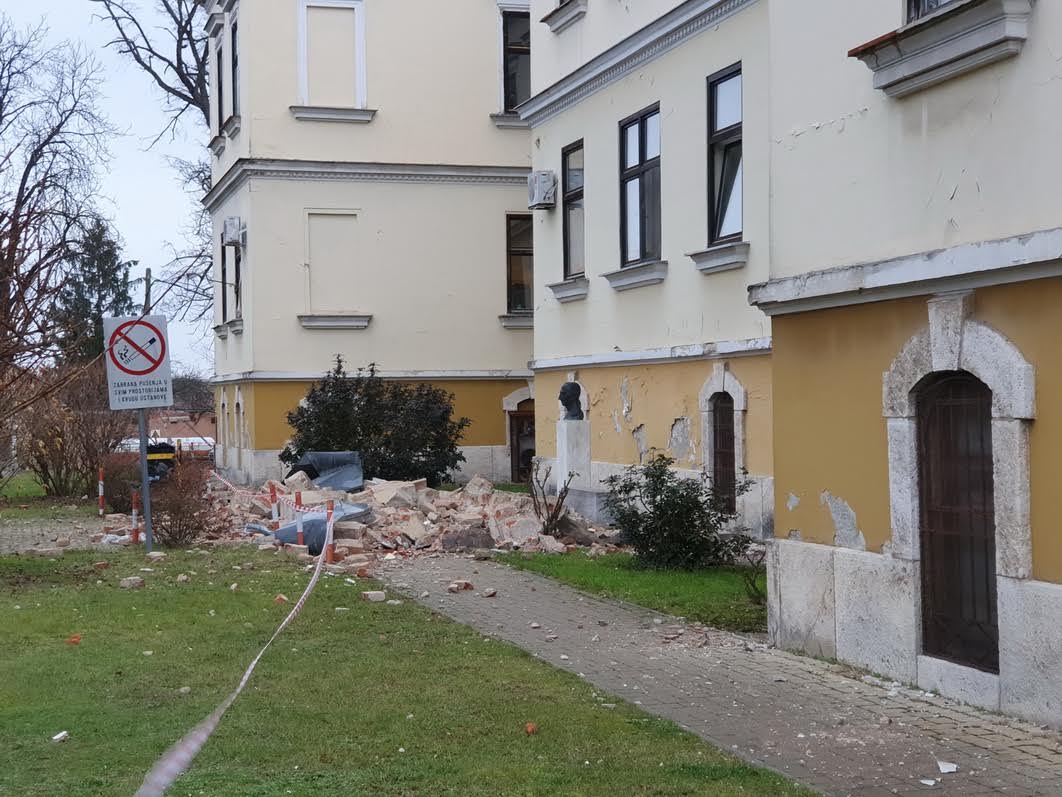
Currently, only three buildings can be used in the hospital - gynecology, surgery and hemodialysis. The central pavilion is under construction and does not yet have a use permit, and five buildings have collapsed. In the hospital, in addition to buildings, furniture and medical, telecommunications and IT equipment were also damaged.
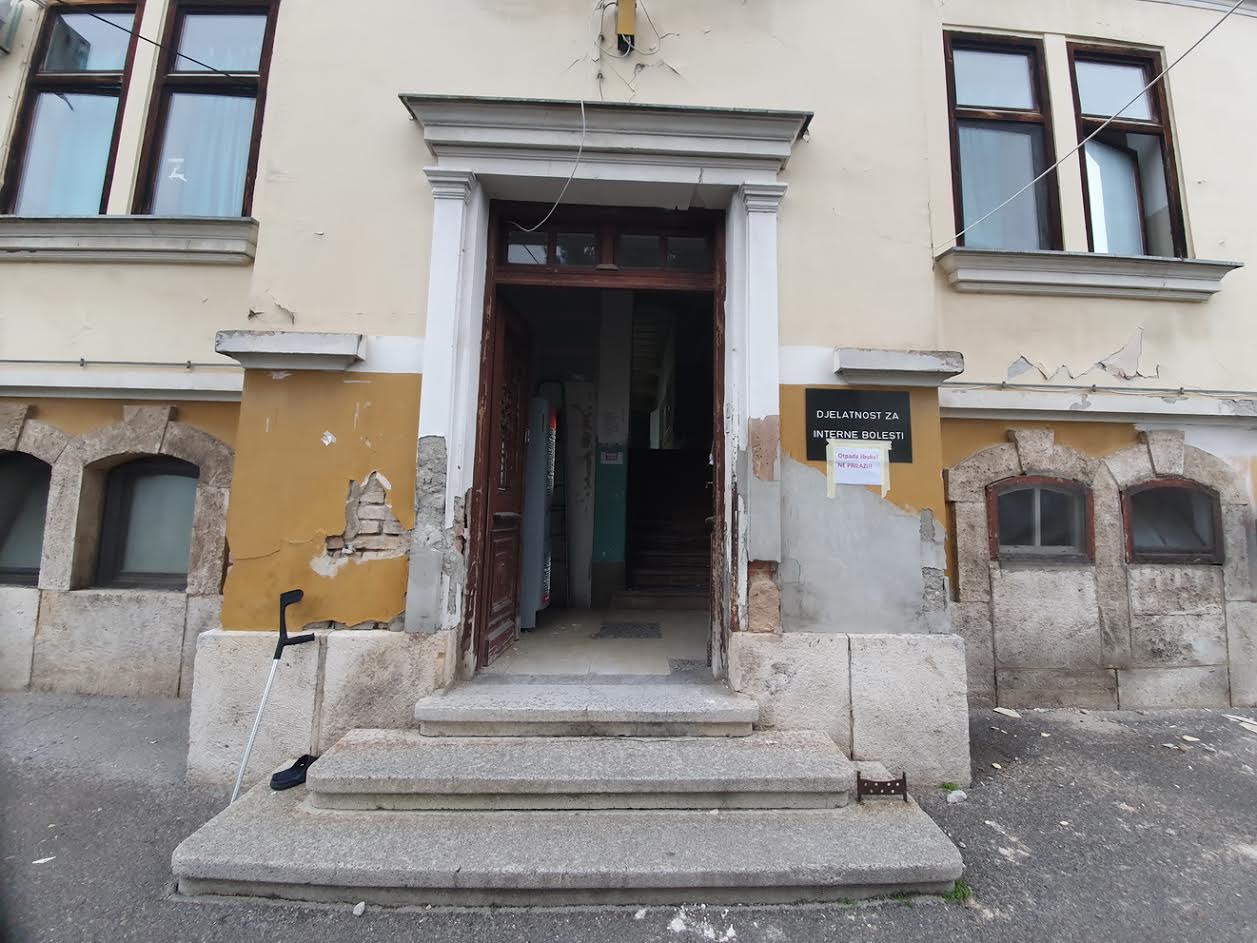
"Fifty patients are currently hospitalized. The hospital has 408 beds and between 1,000 and 1,200 patients pass through it daily. We now perform only diagnostic processing and process emergency internal medicine, infectological, pediatric and surgical cases. Unfortunately, we have to send more and more difficult cases to Zagreb ", said mr. sc. Tomislav Dujmenović, director of the General Hospital "Dr. Ivo Pedišić “.
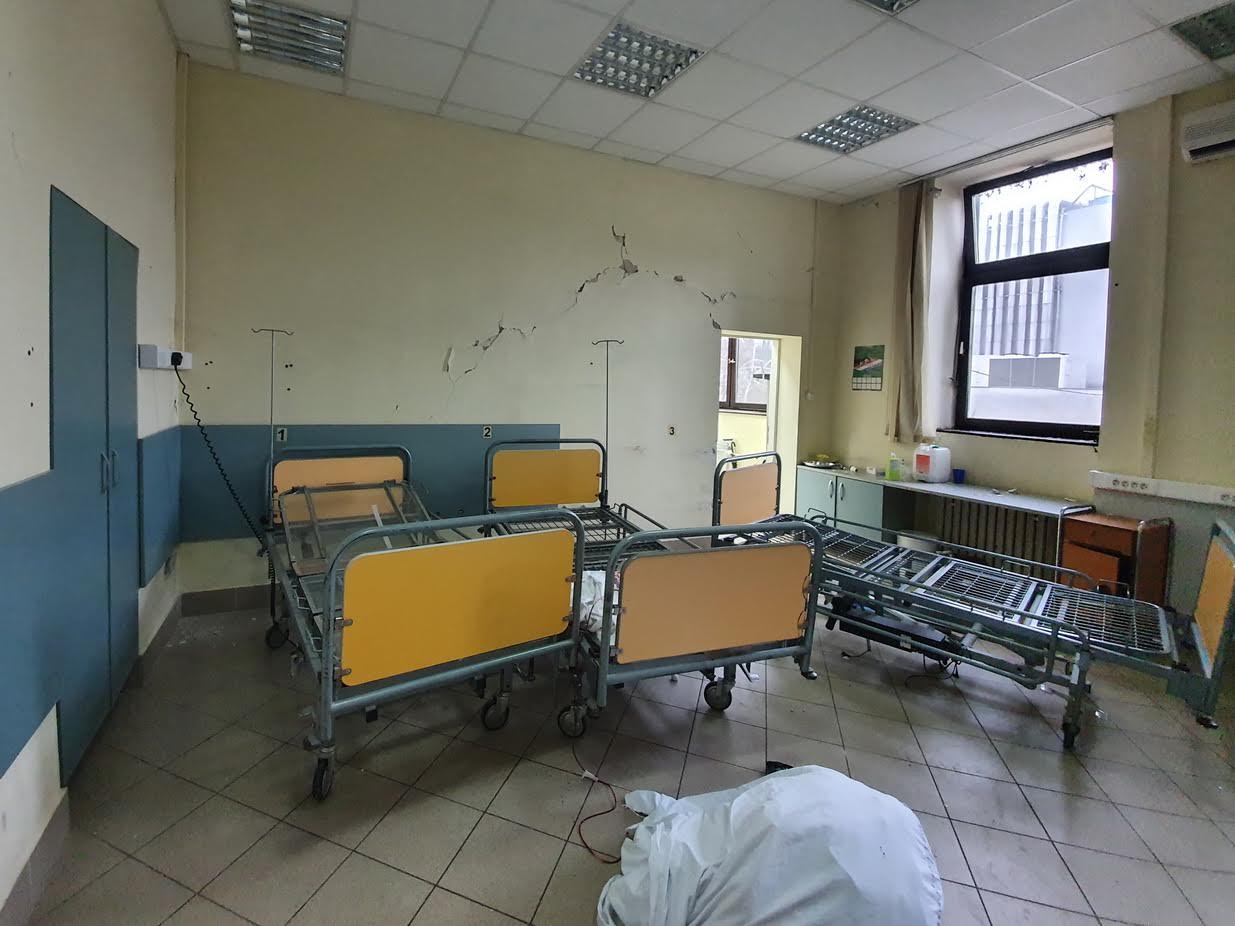
The total damage to the hospital cannot yet be estimated at this time, but while waiting for the hospital to be systematically rebuilt, it needs help in urgently procuring the equipment needed by healthcare professionals and patients during their hospital stay.
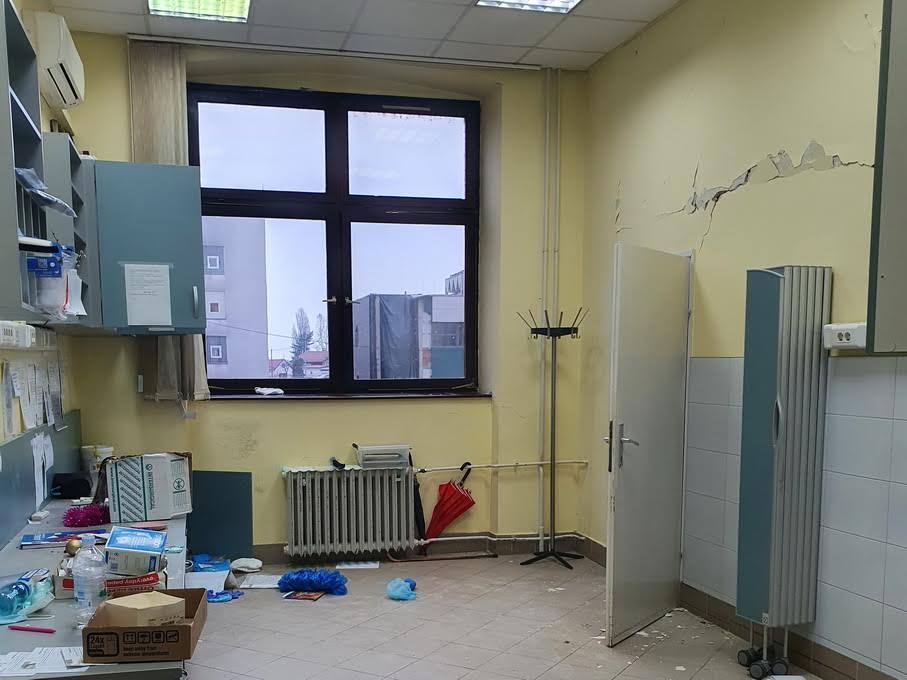
"The funds we are collecting are kind of emergency aid to the Sisak hospital! That is why I am asking companies and citizens to get involved in the campaign with their donations. Let's reanimate the Sisak hospital with our hearts", said Ognjen Bagatin, president of the association Pomaganje je uvijek IN.
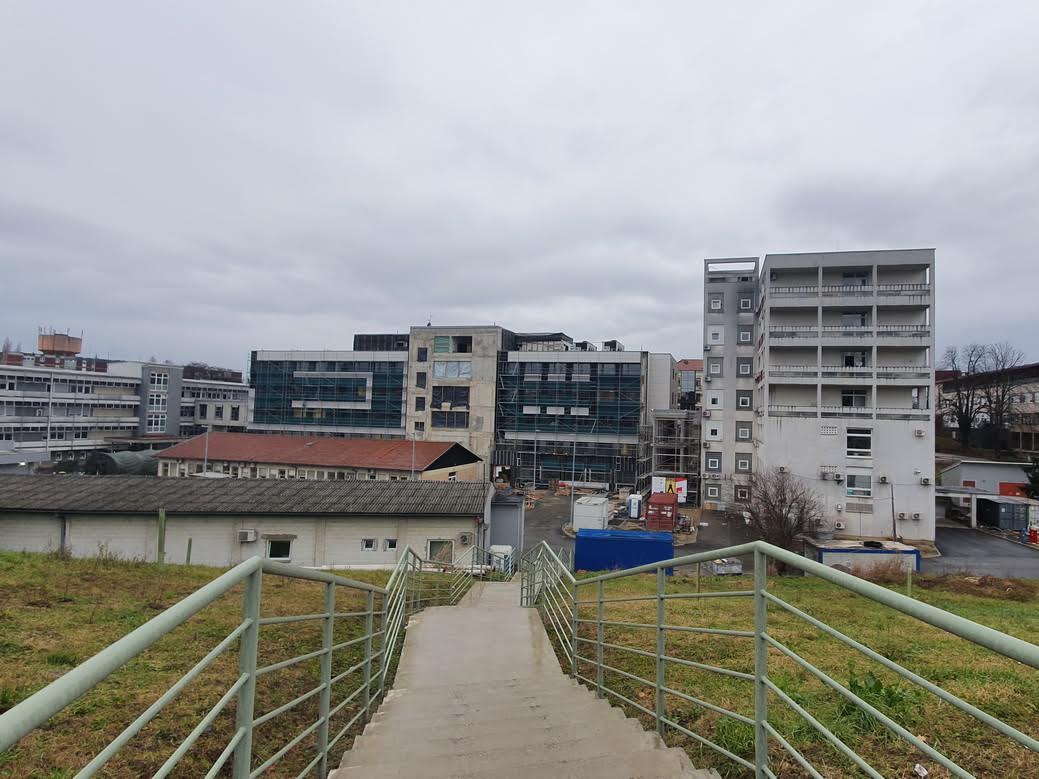
The campaign "Let's help the Sisak hospital" will last for 30 days with the aim of collecting one million kuna, which will be transferred entirely to the hospital's account. At the end of the campaign, the hospital will publish a report on what the donations were spent on.
Campaign: https://croinvest.eu/kampanja/pomozimo-sisackoj-bolnici/
Additional information: Facebook page of the association Pomaganje je uvijek IN
Media contact: Krešimira Rendulić, This email address is being protected from spambots. You need JavaScript enabled to view it., 098 720 221
For the latest coverage from the Petrinja and Sisak earthquake, follow the dedicated TCN section.
Croatian Resident from California on Earthquake Insurance Policy Back in the USA
January 5, 2021 - With 85% of Croatian homes not insured for earthquake damage, what is the earthquake insurance policy in other high-risk areas? A Croatian resident from California.
One of the many things we have learned in the wake of the devastating 2020 earthquakes in Croatia is how few people have an earthquake insurance policy. Industry experts put the figure at about 85% of homes without an earthquake insurance policy in Croatia. As we saw yesterday in With 85% of Croatian Properties Not Covered for Earthquakes, an Insurance Expert Speaks, of the officially estimated 100 billion kuna earthquake damage of 2020, only 237.5 million kuna had been paid out in November, or 0.2375%.
One of the responses I had to the article was from a Croatian now retired here, but who lived most of his life in California, a region known for its earthquakes. Here is what he sent me about how the earthquake insurance policy works in California.
California insisted that, in order to operate in the state, an insurance company must offer (as an option) earthquake coverage. After the Loma Prieta and especially Northridge, companies started pulling out of California rather than sell earthquake coverage. The crisis was resolved by the setting up of a state-backed fund and insurance provision, that was sold through insurance companies.
But it was expensive. It was limited in that it only provided 75% cover and only if you suffered a big loss, many tens of thousands of dollars. And worst of all, if there was a big earthquake and the fund ran out, policyholders who were not affected would be called on to pay more into the fund. Unsurprisingly coverage dropped to negligible levels.
Time passed and more time passed, and there were no devastating earthquakes. Insurance companies' drive for more income eventually caused some of them to come back into the market. But it is still expensive. Regarding conditions, there were no special requirements for an earthquake to be a particular strength. It had to be an earthquake though - subsidence, landslides and the like, not caused by an earthquake, were not covered. We decided it was not worth the price, as it would have more than doubled our cost. In 23 years we saved probably over $30000, but yes we were taking a risk. Oh and we had to sign a bit of paper every time we renewed, that we had been offered earthquake insurance and declined it.
Another thing unique to CA (maybe to other US states too) is that your mortgage was something you could walk away from, leaving the property to the mortgage holder. Unlike any other loan, they could not come after you for the difference in value, even if the property was destroyed.
CA also had a state insurance commissioner whose job was to make sure companies behaved. He had real teeth and used them
This is an issue which we will be continuing to monitor at TCN. If you have anything to contribute, please contact us at This email address is being protected from spambots. You need JavaScript enabled to view it. Subject Insurance
For the latest news from the Petrinja earthquake, visit the dedicated TCN section.
If you would like to donate to the earthquake relief efforts, my recommendation is Glas Poduzetnika (Voice of Entrepreneurs) fund - full details here.
Croatian Media Interviews Ex-Emergency Aid Worker Paul Bradbury on Earthquake Response
January 5, 2021 - Some thoughts of a former emergency humanitarian aid worker on the earthquake response in Petrinja, Sisak and Glina.
After the Petrinja earthquake last week, TCN visited Petrinja, Sisak, Glina and Majske Poljane to try and paint a picture of the realities on the ground of the destruction and emergency response. You can read more in Majske Poljane, Glina, Petrinja: A Foreigner View of Croatia's Emergency Response (there is also a Croatian version).
I was subsequently contacted by the Croatian media for an interview about the earthquake response in my capacity as a former emergency humanitarian aid worker. Before moving to Croatia in 2003, I worked as an aid worker for CARE International in emergency response in the Ural Mountains, Georgia, Armenia, Azerbaijan and Tajikistan after the collapse of the Soviet Union in 1992, Rwanda after the 1994 genocide, and Somalia in 2002.
You can see the original article in Croatian here, and the full interview is in English below. Please be warned that if you decide to watch the video on the Armenian earthquake in 1988, which killed 25,000 people, it is harrowing.
You’ve visited the area that was hit by the earthquake. What are your general impressions? Is it as bad as it looks?
I think earthquake sites are always worse than they look, as many of the buildings may still be standing and looking relatively unharmed from the outside, but are actually inhabitable.
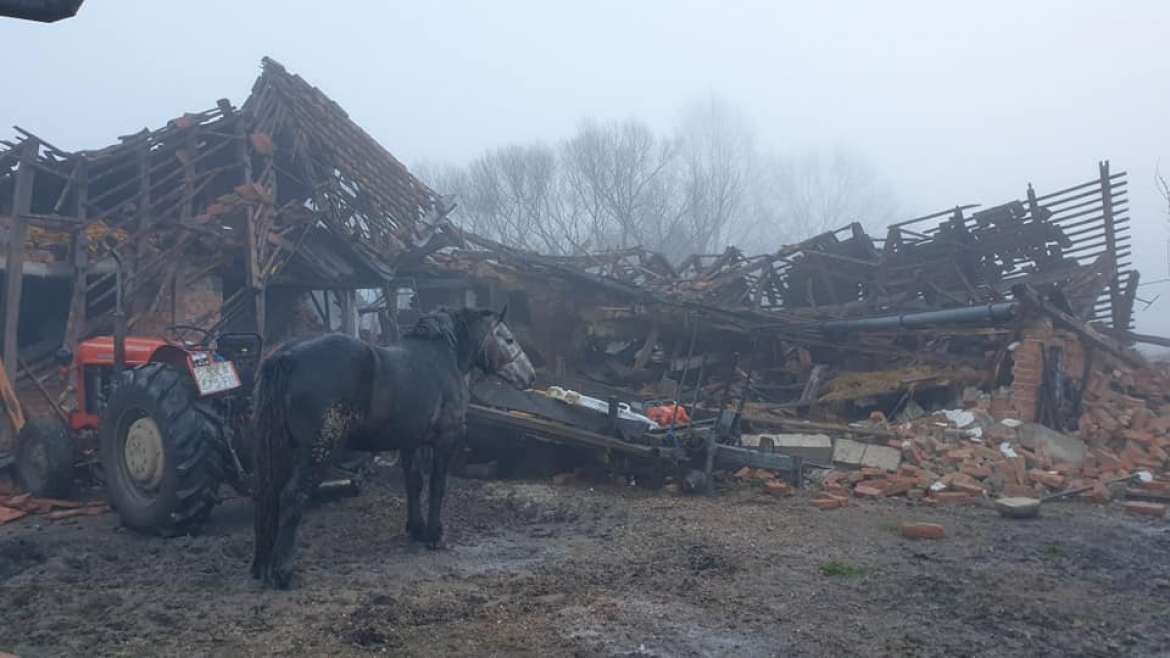
I have never covered an earthquake as a journalist before and was not sure where to start. We decided to leave very early (5am), so as not to add to any traffic congestion. We decided to start in Majske Poljane, which we had heard was the most affected place. It was horrendous, with every building affected, many completely destroyed. One always gets only part of the story on the ground. It was only later that I learned that the destroyed house with 10 bewildered horses that was our first stop was the home where four people tragically died.
After such a shocking introduction, Glina and Petrinja seemed - on the surface - to be a lot less damaged. But as I said earlier, much of the real damage is not available to the naked eye. Some official compared it to the ruins of Hiroshima, which I don't think was very helpful. That impression is also due to the outstanding clean-up operation which took place through the night. A friend in Petrinja showed me photos he had taken soon after the earthquake 24 hours earlier - it was a totally different place. My full respect to all who responded so quickly and magnificently.

(Gyumri in Armenia after the 1988 earthquake)
The biggest earthquake site I visited as an aid worker was Gyumri in Armenia, a 7.0 quake which killed 25,000 people in 1988. Gorbachev promised to rebuild everything, but soon the Soviet Union was no more, and we were delivering humanitarian aid to people living in containers 5 years later. While I don't expect anything like the same situation in Petrinja, Glina and Sisak, it would be heartening to know that the region will not be forgotten once all the initial media attention and emergency response dies down, as it was in 1995.
As a former aid worker, can you tell me from your experience what is the most important thing if you want to help people that were hit by some kind of catastrophe?
Organisation over emotion. I should say, however, that I don't think Croatia has many lessons to learn from foreigners, or former aid workers like me. Croatia's emergency response is second to none, and there is no nation stronger in adversity than Croatia.
But the question of organisation is key. The overwhelming urge is to get in the car and bring food and supplies to help. Without coordination, this can quickly congest the system, as well as neglecting lesser-known areas. Croatia has experts in emergency response. We interviewed HGSS chief Josip Granic while in Petrinja and asked what advice he had for those looking to volunteer. His response was to contact the local Civil Protection Headquarters, which is sound advice.
I should point out that sometimes it is important to pay attention to the type of aid being sent. While cash donations are most welcome, sending materials randomly is not always helpful. Not only can it take up storage space and valuable time documenting and storing them, but they may also not be of any use. Perhaps the most extreme example I can give from my personal experience was after the 1994 genocide in Rwanda, where my project received 20 tons of vegetable seed from an American seed company. This was enough to cover large parts of Africa, and it turned out to be a tax write-off from the company. But it really slowed things down, as the 1.5 million sachets of seeds in the container had no description. As an accountable agency, I had to hire 20 local workers for three weeks to document the gift. It was particularly disappointing to find we had received a lot of useless things, such as 8,000 sachets of catnip seeds.
I haven't followed the response in detail in terms of aid being distributed, but a survival pack work worth 200 kuna, 400 kuna etc with a list of essential items would make things more uniform, and people would know the items most required.
Should the delivery of humanitarian aid be centralized?
Yes, absolutely. In Rwanda, a country the size of Wales, we had 143 NGOs roaming all over the country in their white 4x4s, some with bibles, some with food, many with agendas.
Croatia SHOULD be no different, but there is always the sub-plot here called politics. I have a sinking feeling once more after witnessing such a magnificent early response from the heart. Now the recriminations, accusations and distrust are setting in. You and your readers will know more about that than I do.
The reality is, however, that the response shows one of the big divides in Croatia today. Distrust of the state, lots of heartwarming private initiatives. Back in my aid worker days, it would have been unthinkable to bring the reputation of the Red Cross into question, but there has been plenty on Index and elsewhere on that subject. Lots of foreigners have asked me where to donate. I am recommending the guys at Glas Poduzetnika. Not only are they honest and transparent, but they are big enough and experienced enough to work within the emergency response system for maximum effect.
What’s the problem with the response of the Croatian local and state authorities in this situation? Why is everything moving so slowly but at the same time chaotically?
I am not as informed on the details of this, and so perhaps best for me to leave it to others to comment.
On the other hand, lots of citizens and groups have been doing great work in helping those hit by the earthquake. Is there a way to coordinate those efforts better?
It comes back to organisation over emotion above. Coordination can always be better, and Croatia has lots of experience in this field. It would, I believe, be even better if there was more trust in the authorities. I would suggest that people put their natural desire to provide hands-on help in check and find out what the most practical way to help would be.
One of the bigger problems is traffic. Should there be some kind of timetable for using the roads that survived the earthquake?
I was actually surprised at how little traffic there was when we visited the day after. We left very early to avoid it, but the police seemed to have managed things very well. There were a couple of checkpoints around Petrinja. We were allowed to proceed with a press pass. Controlling the traffic is something Croatia does very well. I will never forget how effectively we were confined to our home towns in March - scary but very effective.
For the latest news from the Petrinja earthquake, visit the dedicated TCN section.
If you would like to donate to the earthquake relief efforts, my recommendation is Glas Poduzetnika (Voice of Entrepreneurs) fund - full details here.


